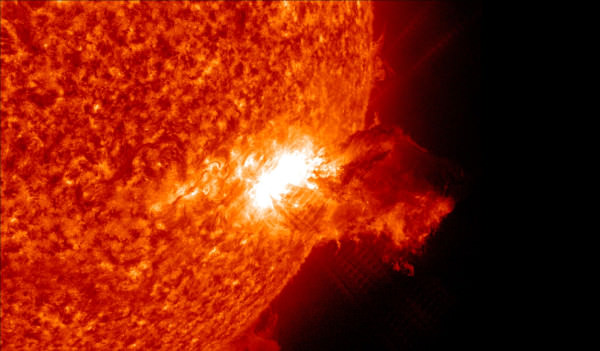When will the next big solar flare occur? How much damage could it cause to power lines and satellites? These are important questions for those looking to protect our infrastructure, but there’s still a lot we need to figure out concerning space weather.
The video above, however, shows magnetic lines weaving together from the surface of the Sun in 2012, eventually creating an eruption that was 35 times our planet’s size and sending out a surge of energy. It’s these energetic flares that can hit Earth’s atmosphere and cause auroras and power surges.
While models of this have been made before, this is the first time the phenomenon was caught in action. Scientists saw it using NASA’s Solar Dynamics Observatory.
Models of the flares show they typically occur amid distorted magnetic fields, the University of Cambridge noted, showing that the lines can “reconnect while slipping and flipping around each other.” Before the flare happens, the magnetic field lines line up in an arc across the sun’s surface (photosphere). That phenonemon is called field line footprints.
“In a smooth, non-entangled arc the magnetic energy levels are low, but entanglement will occur naturally as the footpoints move about each other,” the release added. “Their movement is caused as they are jostled from below by powerful convection currents rising and falling beneath the photosphere. As the movement continues, the entanglement of field lines causes magnetic energy to build up.”
When the energy gets to great, the lines let go of the energy, creating the solar flare and coronal mass ejection that can send material streaming away from the sun. A note, this observation was made of an X-class flare — the strongest kind of flare — and scientists say they are not sure if this phenomenon is true of all kinds of flares. That said, the phenomenon would be harder to spot in smaller flares.
You can read more about the research in the Astrophysical Journal or in preprint version on Arxiv. It was led by Jaroslav Dudik, a researcher at the University of Cambridge’s center for mathemetical sciences.
Source: University of Cambridge

